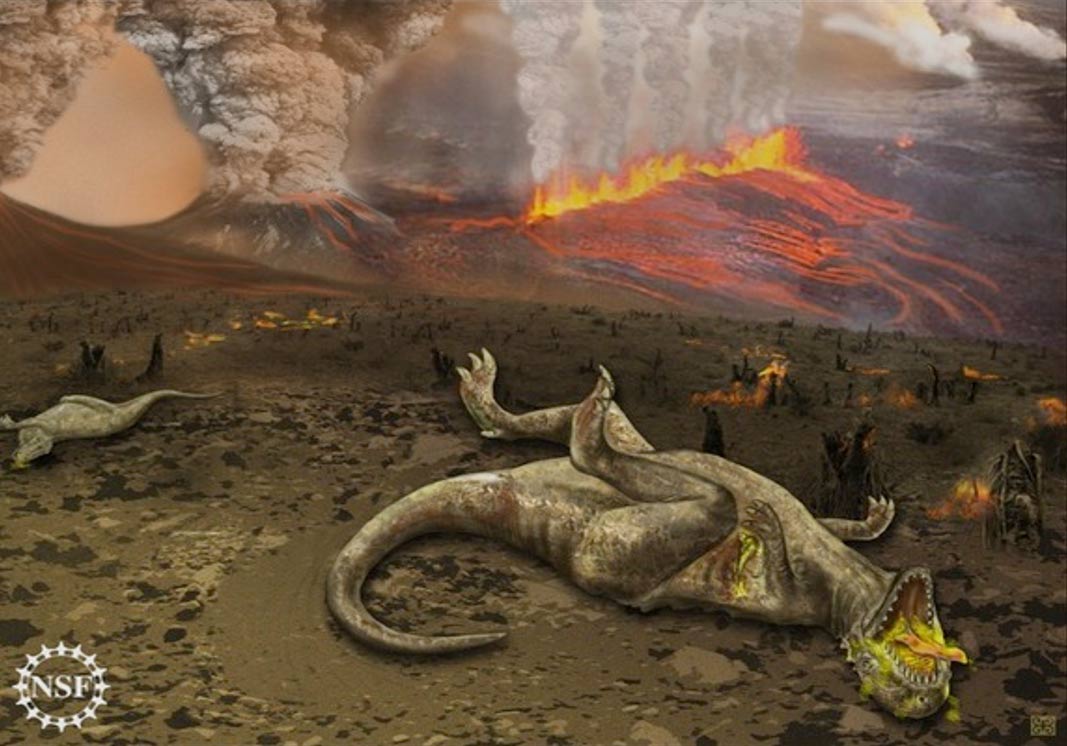Did Elusive Dark Matter Trigger Global Mass Extinctions and Doom the Dinosaurs?
Associations between unseen forces in space and terrific cataclysms on Earth are being made by scientists who hypothesize that dark matter might be behind ancient mass dinosaur extinctions, and may contribute to future catastrophes.

What event finished off the dinosaurs in a global mass extinction – and what might have triggered it? Scientists now wonder if dark matter is the culprit. Credit: Gerta Keller, NSF
The most infamous of the “Big Five” dramatic mass extinctions of the dinosaurs occurred 66 million years ago. It is attributed to a mountain-sized space rock impacting Earth, causing instant and long-reaching disaster on a planetary scale, reports science magazine Scientific American. Such ancient impacts can leave lasting impressions on our planet which remain visible as geological surface scars, as seen in the Yucatan Peninsula and many other locations around the globe.

 Impact event, illustration. Does dark matter lead to destructive impacts and volcanic activity on Earth, leading to mass extinctions?
Impact event, illustration. Does dark matter lead to destructive impacts and volcanic activity on Earth, leading to mass extinctions? 
